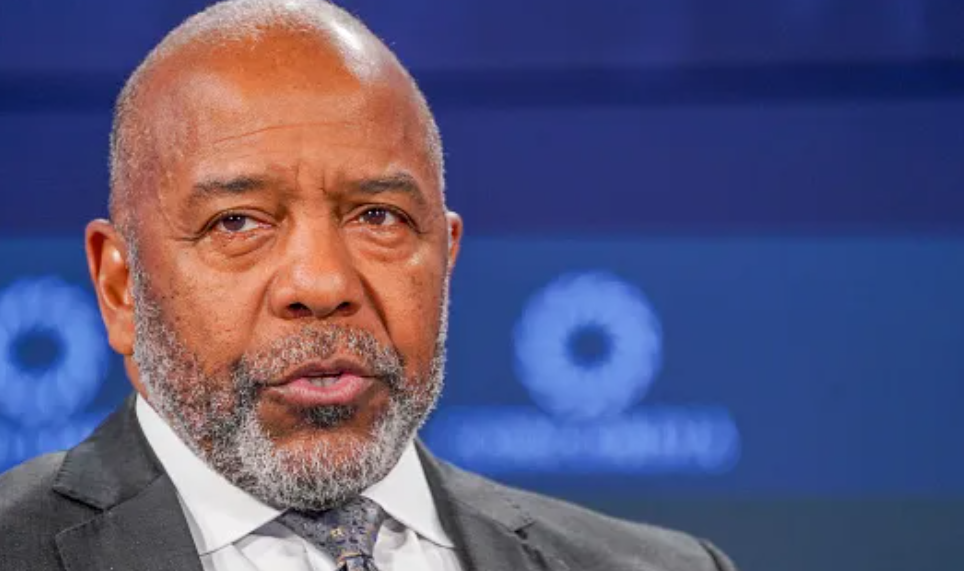by
Overview:
Born in Texas, Bernard Harris grew up in Navajo country after his parents separated and his mother took a job with the Bureau of Indian Affairs. His philanthropy aims to level the educational playing field for children in underserved communities, as well as encouraging them to choose STEM and STEAM fields as areas of study.
At an age when many are already retired, or at least considering the possibilities of a joyful second chapter, Dr. Bernard Harris is still dreaming of what can be for himself and the generations behind him.
In 1995, Harris — physician, astronaut, philanthropist, scuba diver, and author — became the first African American to walk in space. In May, NASA will honor him as the newest member in its Hall of Fame. But his head, one might say, is still in the stars.
His time in the heavens, gazing at the universe while rocketing around the globe at 17,000 miles an hour, taught him about faith: in technology, in his training, and in a higher intelligence in the universe that guides us all. He recalls stepping through the doors of the space shuttle Discovery, taking in “incredibly beautiful” views of the Milky Way, and thinking “‘Oh my God, this just didn’t ‘happen.’”
It felt, he says, as if he had witnessed the Creator’s handiwork.
“You know, you have people who are atheists and people that maybe don’t believe in creation,” he says. “But when I looked at this and looked at the order of this, I knew [the universe] just didn’t ‘happen.”
Awe, Wonder, and Dreams
Harris wants to communicate that sense of awe and wonder — and the lessons he learned on his journey from humble beginnings to the elite corps of NASA astronauts — in his book, “Embracing Infinite Possibilities: Letting Go of Fear to Find Your Highest Potential.”
“I always tell young people: don’t let anyone put limits on your dreams,” he says. “If I can go from a small town in Texas to walking in space, so can you.”
The push to dream was instilled early on, Harris says.
“My mother was an educator. She had a degree from Prairie View University, one of the HBCUs,” Harris says. “And my father only had a 10th or 11th grade education. And one of the first lessons that I learned as a kid is that education gives you options.”
His horizons were broadened even further when his parents parted ways, and his mother took a job with the Bureau of Indian Affairs. She moved Harris and his two siblings to the Navajo Nation, he says, “out of that inner city environment to an environment of grand canyons and painted deserts and petrified forests. You could just imagine as a kid growing up with that.”
That relocation to such a beautiful environment not only changed his expectations but also put him in a space to experience life with people of other faiths and beliefs. ”So if you can combine that with my already spiritual Black mother who was Baptist and also later on AME,” he says, “I had no choice but to have faith.”
Discovering NASA
At age 13, NASA’s space program caught his attention: “I saw Neil and Buzz land on the moon, first humans on another heavenly body, and I decided I would follow in their footsteps,” he says.
His NASA point of entry was as a researcher studying human survival in space, in a microgravity environment. And then as a flight surgeon to take care of astronauts and their families. From there, it was a relatively short step from the laboratory to astronaut training and space flight.
“I flew on board the shuttle — on board Columbia and Discovery,” Harris says. “These vehicles were incredible. They weigh about 5 million pounds. In order to get that weight of the vehicle into the air, we had to light five engines that produce a thrust of 7 1/2 million pounds.”
It takes a little longer than eight minutes to get into orbit at 17,500 miles an hour, “and at 17,500 miles an hour, we can go around the world every 90 minutes,” Harris says, seemingly still in awe of the experience. “And I get to see a sunset or sunrise every 45 minutes. So pretty amazing. And the views from 250 nautical miles are incredible.”
A New Mission
The science behind the missions to space has become Harris’ new mission: encouraging more young people to follow in his footsteps through The Harris Institute/Bernard Harris Foundation. The goal behind the twin nonprofits is to help level the educational playing field for young people from disadvantaged backgrounds, and encourage young people to embrace and study STEM subjects — science, technology, education, and math.
His ongoing mission is to help bring the reality of space closer to the rest of us. He talks about companies like SpaceX and Blue Origin.
“These are companies that have launched platforms that are going to allow us to get to low Earth orbit, the moon, and beyond,” he said. “That is our future as human beings. And I want to make sure that our community is prepared for that future. And that’s, as I said, that’s my mission. That’s my new ministry: to make sure that young people and old people, people who have set aside their dreams for whatever reason, but want to pick them back up, again, they’ll need to have expertise in the STEM and what we call STEAM fields.”
He says it’s not so much about careers, as is it “unlocking the tools to change the world, because technology is everywhere.”

